|
10/28/2019 0 Comments Meet Our Fabulous New Board!The Chapter of the Scientista Foundation announces the selection of five members to its 2019-2020 Executive Board. The E-Board, led by Sarah Schaffel, consists of Sarah, Sydney Edwards, Angie Miller, Rhea Rajani, and Sherry Li. "All of our Board members are committed to the founders' mission of building a community that empowers college and graduate women innovating science, technology, engineering, mathematics, and medicine here at our university. Each of them bring deep wells of expertise and I know their perspectives will make our Chapter stronger. I can't wait to see all of the amazing things they accomplish as we continue to grow and develop a robust community here at Michigan," Leena Shah '16, Board of Trustees member and Founding Director. The Chapter is so fortunate to have these five accomplished and committed Scientistas lead the organization to greater heights: SARAH SCHAFFEL, DIRECTOR SARAH SCHAFFEL is a sophomore intending to concentrate in Computer Science. On campus, she has served as a MLEAD Academy Leader, through which she participated in a leadership training program, welcomed other students and provided help with residence hall move-ins. Through the philanthropic arm of the University of Michigan chapter of Alpha Phi, she plans and executes events to support women's heart health, including an annual charity gala. Sarah hails from Deerfield, Illinois, where she held various positions on her high school's student council, organizing and participating in activities that raised hundreds of thousands of dollars for area charities. There she also helped to provide a warm, friendly environment ensuring positive experiences for dining members and guests of a country club community. A volunteer with the city of Chicago's chapter of a nationwide nonprofit, The Birthday Party Project, Sarah brought joy to local children, organizing themed birthday parties for those experiencing homelessness. SHERRY LI, DEPARTMENT AFFAIRS CHAIR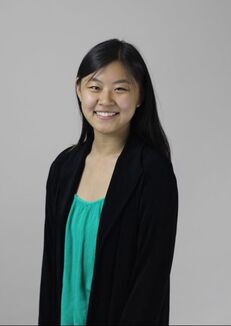 SHERRY LI is a senior studying Industrial and Operations Engineering. As External Vice President of the University of Michigan's Institute of Industrial and Systems Engineers (IISE), Sherry manages an executive board for a chapter of the largest professional society dedicated solely to the support of the industrial engineering profession and individuals involved with improving quality and productivity. Versed in both high-level programming and database management languages, she has assisted multiple university research experiences including a project on drug shortages for which she identified patterns in shortage factors and created models in Python to demonstrate trends between various drug types. The College of Engineering selected Sherry as an Instructional Aide to lead a laboratory section and help all students studying linear statistical models improve their understanding. Through chairing one of the best student-run pan-Asian cultural programs in our country, Sherry has also helped to coordinate the largest Asian American culture show here in the Midwest. ANGIE MILLER, MANAGING EDITOR AND PUBLISHER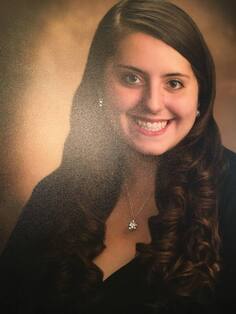 ANGIE MILLER, a 2017 alumna of the College of Literature, Science, and the Arts (LSA), is a graduate student in the School of Public Health where she is currently pursuing a Master's of Public Health (MPH) degree in Global Health Management and Policy. She has multiple years of involvement with Scientista. As a blog contributor with the Lit Team in 2014-15, Angie researched and produced interesting posts on an array of STEMM careers, introducing members to their broad-ranging and diverse topics and helping to grow overall readership of Chapter publications. In 2016-17, she joined the E-Board as Outreach Chair, working to raise the visibility of our Chapter and supporting events on campus in alignment with Scientista's mission. Outside of Scientista, Angie has worked on research related to chronic disease prevention and management, contributing to the development of interventions to transform policy and practice. She currently works as a Graduate Student Instructor in the College of LSA's Women's Studies department, where she teaches the critical and historical study of women, sexuality, and gender and lectures on domestic violence policy and global women's health. RHEA RAJANI, EVENTS CHAIRRHEA RAJANI is a freshman intending to concentrate in Biology. She hails from Holland, Michigan, where she gave presentations about mental health to high school, middle school, and elementary classes with Be Nice, an initiative aimed to erase stigma and make schools more open, caring environments. While in high school, she participated in an Ambassador Leadership Summit at Harvard University, where she engaged with an exclusive curriculum targeted towards students recognized for leadership potential by their communities. Across the world in Mumbai, India, Rhea interned with The Welfare of Stray Dogs, a local organization committed to controlling the city's street dog population in humane, scientific ways. As a high school student, she advanced her knowledge of animal care through pursuing a course in veterinary conservation through the top-ranked College of Veterinary Medicine at Cornell University. By the time of her graduation from high school, the Michigan Department of Education awarded Rhea a Seal of Biliteracy in recognition of her abilities to speak and write English and Spanish. SYDNEY EDWARDS, PUBLIC RELATIONS CHAIR SYDNEY EDWARDS is a junior intending to concentrate in Neuroscience. On campus, she serves on the Executive Committee of Mu Epsilon Delta, a national health science, honor, and service pre-professional organization. As a Research Assistant in the Anantharam Lab, she has helped to investigate the molecular mechanisms of neurotransmitter/hormone sorting and secretion. Through the Michigan Pre-Med Advising Community (MPAC), Sydney provides resources and mentorship to underclassmen, helping to alleviate anxieties of adjusting to college life, especially for those who are the first in their immediate families to attend college. As a Peer Advisor through Pre-Med Hub, which provides a peer-to-peer pre-med resource for University of Michigan students, she additionally fields questions about classes, research, and organizations. Sydney completed the hEARt Listens Supporter Training Program, which has allowed her to provide peer support services to those encountering mental health challenges. 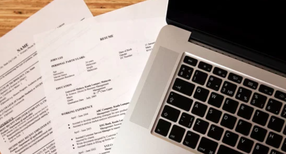 Thank you to all the students who have applied for a leadership position on the Executive Board (E-Board). We are currently reviewing applications and will contact you if we need additional information. The review process will be completed within the next few days with final selection of E-Board members before the end of next week. 4/13/2015 0 Comments The Apple WatchBy Kaitlynn Bayne
Apple is at it again. Their latest product? The Apple watch. This new device will have many options for the band, so it will be easy to customize. It can be synced to your iPhone, allowing you to be notified when you receive new messages and phone calls. The watch has sensors that touch your skin, which allows it to do so much more than just a watch with a screen. It vibrates when you have a new message, allowing you to communicate easier and faster. With these sensors, it can also measure your heart rate with its workout app. That’s right- the watch has its own apps! The health aspect of the watch is what everyone is talking about right now. The workout app not only measures heart rate and physical activity throughout the day, but will also vibrate when you have been sitting around for too long without moving. This is to remind you to get up and start moving. Another app, made by Dexcom, will be able to measure diabetes patients’ glucose levels with a monitor that is inserted under the patient’s skin. As this app shows, the Apple watch has great potential with many different health aspects. Even more apps are being developed specifically for the Apple watches. Being the first of its kind, technology that is wearable and touches the skin, the possibilities are endless. Although this watch seems like something completely new, the reality is it combines a bunch of other technologies together. It’s like taking a fitness band, a watch, a phone, and a blood sugar monitor and morphing it into one. Yes, it would be very convenient to have all of that accessible in one place; but once again it begs the question, is it necessary? Think about it, many people have their phones that they use, and more and more people are using fitness bands. At the same time, those who need such things as glucose readers, have those as well. Will people be willing to spend ~$350 simply to have everything in one place? That’s right- the Apple watch will be sold starting at $350. I think the most unique thing these watches will have to offer is their ability to receive messages. However, I feel like we are in a time where we are already too accessible to other people. I wouldn’t want to be reached even easier. But, that might just be me. Research: http://www.apple.com/watch/ http://www.foxnews.com/tech/2015/02/11/tim-cook-on-apple-watch-fighting-new-cancer/ 4/13/2015 1 Comment Pilots: Flying Through Life By Angie Miller Alert? Logical? Like new adventures? Love to travel? Pilots are a branch within the physical science field. The growth for pilots in the next ten years is at a much faster than average growth of 21% or more. The median salary of a pilot in the United States is $70,000. From flying planes to helicopters to helping the law enforcement and health professionals, pilots help people in another dimension. Work environment for pilots is very non-traditional. Pilots spend lots of time away from home due to flights locations and overnight layovers. Airlines provide transportation, meals, and hotel accommodations for pilots. Pilots are regulated to usually fly 65 to 75 hours a month. With more seniority, the work schedules can become more regulated. Generally pilots check engines and instruments before flights, monitor engine operation, review data, plan flights, and change routes, altitudes, and cargo. Education for pilots is usually focused on a general education of some science, math, English, and computer science. Pilots are usually required to have a Bachelor’s degree. All pilots who are involved in commercial flying of people or cargo are required to have a license. To obtain a license, flying experience is necessary. After initial training, pilots have to continue training and being in a simulated environment. Personality skills that are important for pilots include being in a good mental health condition, being organized, and very meticulous. Similar careers to pilots are locomotive engineers, ship and boat captains, and forest fire fighting supervisors. Article link: http://www.sciencebuddies.org/science-engineering-careers/earth-physical-sciences/pilot#keyfactsinformation By Ammara Virk
Measles is a well-known, but perhaps not thought-of-often disease. Measles is a highly contagious respiratory disease caused by a virus. It can spread via air. Symptoms include fever, runny nose, cough, red eyes, and sore throat. This is followed by a rash that spreads all over the body. It remains “one of the leading killers of children in the world” (Park, CNN) Measles has, typically, been relatively well contained within the U.S—in fact, the US had eliminated the disease 15 years ago. However, measles has resurged, and “it’s not alone” (Park, CNN). Not only has measles re-emerged in northeast Nigeria, but it has also made an appearance in Disneyland in California. I feel that this resurgence may have partially to do with immunization—how people perceive immunization has a great effect on whether or not they are willing for themselves and their loved ones to receive it. Particularly in the US, it may be that since the disease was supposedly eliminated a while ago, people may have been lax, and easily spread the disease. For example, in Canada last year, a group that didn’t take the vaccines carried its infection back to Canada after visiting the Netherlands. Sources: http://www.cnn.com/2015/02/06/health/measles-worldwide/index.html http://www.cdc.gov/measles/index.html By Alyson Rich Fiction: there is no satisfying scientific support for the idea that subliminal messaging can manipulate people. Subliminal messaging refers to the brain receiving information below the “limen”, or our conscious awareness threshold. The information is meant to embed itself in the mind to alter behavior. People often attempt to quit smoking through listening to motivational tapes while they sleep, in the hopes that hearing “you do not need to smoke” will penetrate their subconscious mind and make it so that they no longer have the urge to smoke. Unfortunately, this method is not consistently helpful in kicking the habit. Resulting shifts in behavior are mostly due to the expectation of a positive result. This myth originated from a 1957 “study” conducted by a market researcher named James Vicary. Vicary said that he had introduced several messages telling viewers in a movie theater in New Jersey to buy popcorn and Coca-Cola. These messages only appeared on screen for 1/3000th of a second, so none of the viewers were aware of these messages. That is when Vicary coined the term “subliminal messaging”. Vicary’s work can only be referenced as a “study” in quotations because he falsified data to prove his hypothesis that these subliminal messages could alter behavior. Later studies revealed that subliminal messages had no, or very little, effect on controlling viewers. Unfortunately, the idea had already become very popular before this was discovered. Publishers during the 1950s – 1970s detailed how advertisers could benefit from subliminal messaging, and these reports were taken so seriously that the Federal Communications Commission (FCC) actually felt the need to ban subliminal advertising in 1974. If subliminal messages have any effect at all – and there is a lot of controversy over whether they do – they would act as nudges to behavior, not eliciting any radical alterations. 4/9/2015 0 Comments 3 People, 1 Healthy Child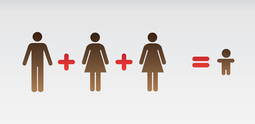 By Kaitlynn Bayne Recently, the UK has decided to pass a law allowing a baby to be created by three people. At first thought, you might wonder why this would be necessary. However, this technique was actually created as a way to prevent mitochondrial defects being passed on to a child from its mother. Defects in mitochondria can cause damage to the brain, degrading muscle, heart failure and blindness. There are two different ways this technique can be done. First, you take the nucleus from the embryo of the parents and you remove and destroy the nucleus of the donor. Then, you take the parents’ nucleus and add it to the donor’s embryo, which is then implanted into the wound. The second method is very similar, however, instead of using the parents’ embryo, it takes the nucleus from the mother’s egg. There are many people who disagree with this method because they believe it is allowing people to “play God.” But, although it isn’t natural, it does not mess with the DNA at all. It purely focuses on the mitochondria and transfers all of the genetic material from the parents’ nucleus into the healthy mitochondria of the donor. All this does is eliminate mitochondrial defects and allows a woman that passes along this genetic disease to have healthy children. This process was recently voted on in the UK and won 382-128. Another part of UK government still has to vote on this; however, if passed, it could be as early as next year for a baby of this kind to be born. Although the ethics are being questioned, I think it is an amazing discovery, especially for those who do carry genetic disorders. This is giving parents an opportunity they wouldn’t normally have- to have a healthy child. I think that is reason enough for the UK to pass this! 4/9/2015 0 Comments The future of geneticsBy Saara Mohammed
This semester I’m taking a microbial genetics class, and it’s gotten me more and more interested in the future of genetics for us humans: the increased ease of DNA sequencing, and what it will mean for our lives- health related as well as social. Genomics is a subset of genetics in which recombinant DNA, DNA sequencing, and bioinformatics sequence, analyze, and assemble the structure of genomes (1). The size of a genome, or all the genetic material of an organism, doesn’t depend on the physical size or complexity of the organism. For example, the amoeba genome is 200 times our 3-billion-base genome (2). The exon, or part of the genome that actually codes for proteins, could be sequenced individually, and only makes up 2% of the entire genome. We’re already seeing the effects of the ease of sequencing on our ability to trace our family line and determine which genes we may need to pay attention to. Services like 23 and Me, a company that sells DNA tests for $99 for you to trace your genealogy. When you click over to their website, you see invitations to sequence your genome as a new year’s resolution: “Learn more about yourself this new year” (3). According to an article in the Wall Street Journal in 2012, 23andme “has the largest autosomal DNA database, with more than 180,000 people” (4). Your results can reveal whether you carry mutations for 100s of rare genetic diseases, and your risk of common diseases. But for health care as a whole, there are new questions to consider. Those who get the test results must be ready to find out about diseases you may have or alleles you may carry for diseases that may be past down to your children. And then there is the problem of how much and when to reveal the information to children, which can change their approach to their health in important ways. I’ll explore genomics and the implications for health care and society in my following posts. References: 1. National Human Genome Research Institute (2010-11-08). "A Brief Guide to Genomics". Genome.gov. Retrieved 2011-12-03. 2. McCarthy, Jeanette. "In My Genes." Genomics 2014: 10-12. 3. https://www.23andme.com 4. Tergesen, Anne. "Finding a Few Hundred Cousins." WSJ. The Wall Street Journal, 12 Dec. 2012. Web. 10 Jan. 2015. |
WELCOME, UMICH SCIENTISTAS!
CAMPUS PICS
WHAT'S NEWUPCOMING EVENTSPAST POSTS
October 2022
SORT BY TAG |
The Scientista Foundation, Inc. All Rights Reserved © 2011-2021 | Based in NY | [email protected]
The Network for Pre-Professional Women in Science and Engineering
The Scientista Foundation is a registered 501(c)(3) -- Donate!
The Network for Pre-Professional Women in Science and Engineering
The Scientista Foundation is a registered 501(c)(3) -- Donate!



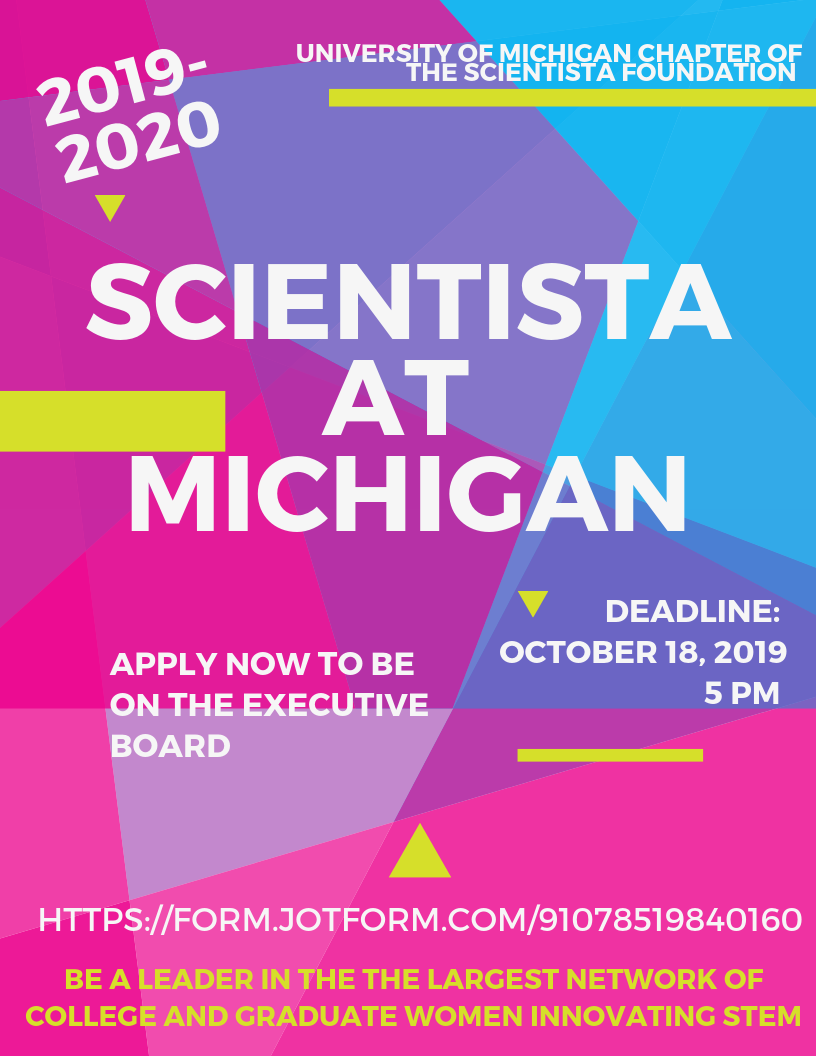

 RSS Feed
RSS Feed